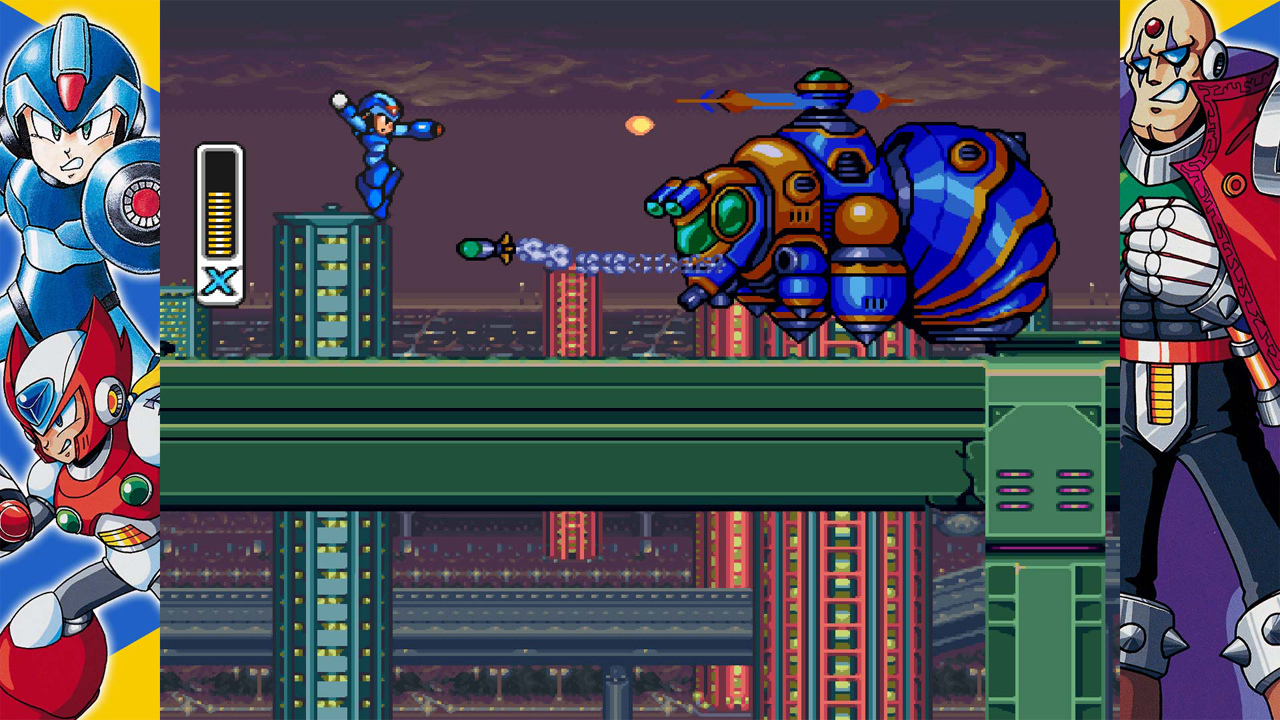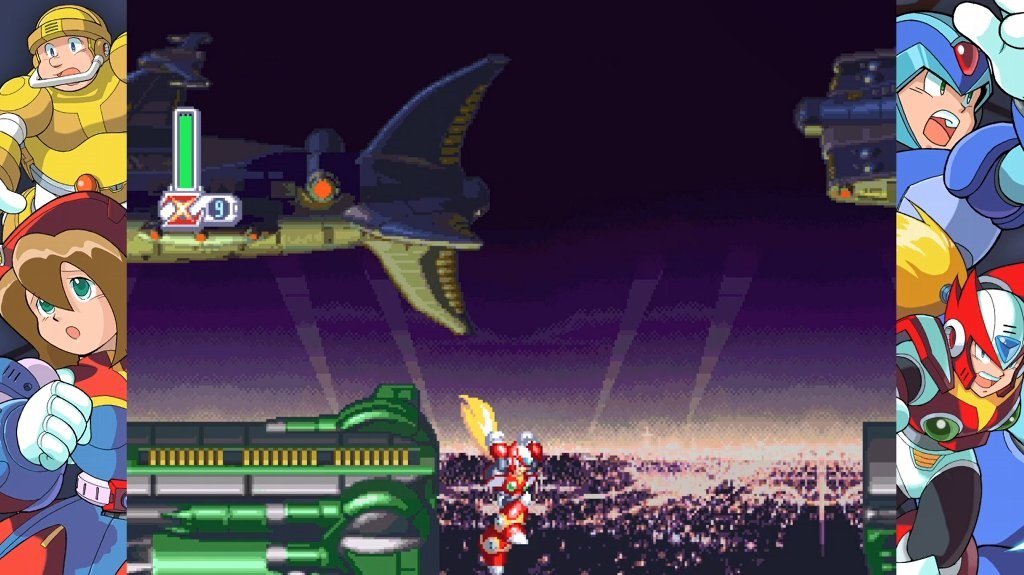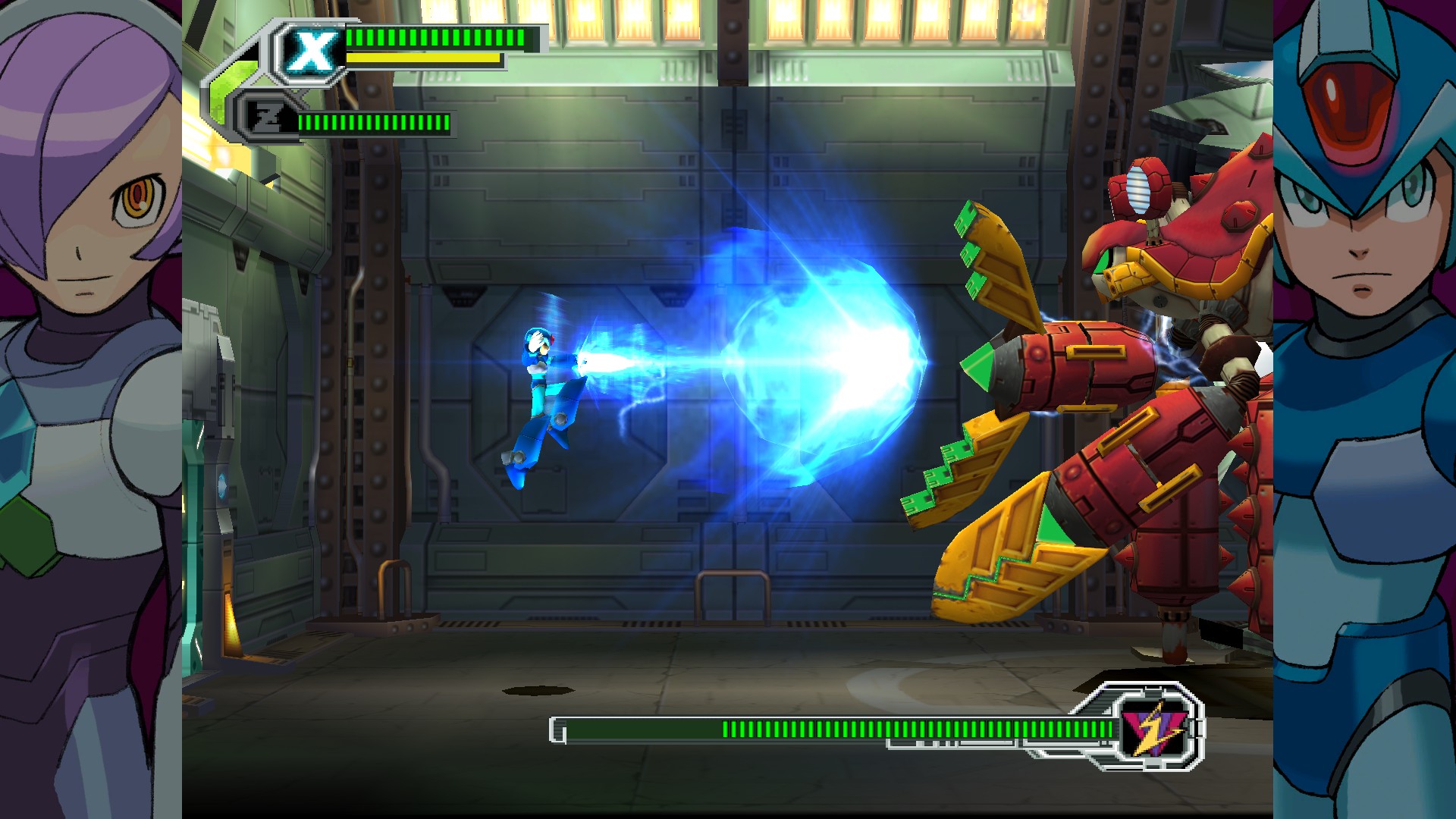
In an attempt to give their mascot a makeover for a new decade, Capcom in the early 1990s reinvented the Mega Man series as Mega Man X. The brand new sub-franchise followed from the events of the original Mega Man games, set in the 22nd century, and following the exploits of a robot with free will, X, and his role as a Maverick Hunter, hunting down other robots with free will gone rogue and turned against their human creations.
While the story in the Mega Man X games is actually far more emphasized than in the originals – the games saw the transition to the PlayStation (and later, the PS2), and the eventual inclusion of (rather terrible) voice acting, (poorly directed) cinematic cutscenes, and other storytelling aspirations – ultimately, any Mega Man fan knows that the plot is just an excuse for the action.
Of course, the Mega Man X series actually puts its increased storytelling focus to some good use. For instance, rather than throwing the player to a stage selection screen right away, they have you play through a intro level, which acts as a simple sandbox to come to grips with the game’s mechanics, with a boss fight to boot, before using the story setup to present you with multiple stages for you, disguised as story objectives, that you can pick and choose in any order. In that sense, Mega Man X games are, much like Capcom intended, the original game, just evolved.
"The Mega Man X series actually puts its increased storytelling focus to some good use. For instance, rather than throwing the player to a stage selection screen right away, they have you play through a intro level, which acts as a simple sandbox to come to grips with the game’s mechanics, with a boss fight to boot, before using the story setup to present you with multiple stages for you, disguised as story objectives, that you can pick and choose in any order. "
In other ways, the Mega Man X games actually were a bit different from the original series. They added the ability to dash through stages, and to wall jump, both of which led to faster paced progression through levels, and a bit more forgiving design than the original games. They generally also hewed closer to action than pure platforming, resembling run and gun style gameplay a whole lot of times. But where they didn’t differ from the original games, at least the first four Mega Man X games, was in their mastery over great design and tight control, that makes the player feel directly responsible for everything that they do in the game, success or failure. When you die stupidly on screen, you know it’s because you didn’t jump at the right time, or didn’t manage to attack the boss the way you should have. When you succeed, you know it’s because you’ve mastered the controls and the game itself, as well as its patterns that it asks you to memorize and consider in a far subtler and more organic way than the original games often did with their more overt reliance on getting the player to master their patterns.
If you’re a Mega Man fan, you already know all this. You know what to expect from these games, in fact, that’s why you love them. The question on your mind is whether or not this collection is worth your time. The answer to that, very simply, is yes, it is. If you are a Mega Man fan, the Mega Man X collection is a loving homage to these games of the 1990s that managed to reinvent the Blue Bomber for a new era.
As with the Mega Man Legacy Collection, the Mega Man X Legacy Collection is split into two parts. The original part includes the first four games, and the latter half contains the other four. What this means is that this collection is incredibly front loaded- the first four games are the ones that fans like, with the series generally considered to have declined sharply starting with the fifth game. Sure enough, Mega Man X Legacy Collection 2 includes Mega Man 5 and 6, which are at best tired imitations of the far superior original four games, Mega Man X7, a clumsy and misguided attempt at trying to reinvent the series in 3D, and Mega Man X8, which I don’t want to talk about. Meanwhile, the first collection includes the original game, which is a veritable classic (if far harder than I remembered), X2 and X3, which are great extensions, and Mega Man X4, a game that holds up, and is, far better than a lot of fans would give it credit for.
"This collection is incredibly front loaded- the first four games are the ones that fans like, with the series generally considered to have declined sharply starting with the fifth game."
The quality of the games themselves aside, however, these collections are equally worthy- they are both loving emulations of the games, with minimal lag and a collection of great extras fans will love, including a concept art gallery, a boss rush mode that is structured like an arcade game, the ability to play through the games’ entire soundtracks, animated shorts, and more. The fact that some of these games, such as Mega Man X3 are so hard to come by these days for anything even remotely resembling a reasonable price, makes these collections that much sweeter.
Retro game aficionados will find more to love in these collections as well- you are given a lot of options to make your experience as authentic as possible. You can play through the games in their original 4:3 ratios, or stretch them out to fill out the full 16:9 screen you are likely playing these collections on (don’t do that), you can play them with a “cleaned up” look, or with a CRT filter in place, you can even select the background wallpapers that show up to fill the side of your screens if you play the games at a 4:3 ration. For those retro game enthusiasts who find the games are far harder than they remember, or for newcomers to the series, Capcom has even included a “Rookie Mode” across all the games, so you can play them with far easier difficulty than the original titles- something that you may need if the at-times brutal difficulty of the SNES era is not something you want in your games.
"The quality of the games themselves aside, however, these collections are equally worthy- they are both loving emulations of the games, with minimal lag and a collection of great extras fans will love, including a concept art gallery, a boss rush mode that is structured like an arcade game, the ability to play through the games’ entire soundtracks, animated shorts, and more."
There’s not a whole lot to complain about here- Capcom has even gone ahead and split the collections up so you have a choice of which set of games to get. The titles hold up well, especially, paradoxically enough, the earlier games, and remain some of the best games Capcom as ever made to this day. The games look great, sound fantastic, control like a dream, and the collections capture and recreate that amazingly well, with some great extras thrown in to boot as well. If you are a fan of Mega Man, the Mega Man X legacy collections are an unhesitant yes.
This game was reviewed on the PlayStation 4.
Loving collections of the original games, with great emulation, multiple extras, games that hold up today remarkably well, great options for retro game enthusiasts via a CRT filter and the original aspect ratio, a rookie mode to tone down the games' difficulty, and the availability of some games that otherwise are extremely rare to otherwise come by
The collection is very frontloaded- Mega Man X5 and onwards are rather poor games, which makes, quality of emulation and great extras aside, buying Legacy Collection 2 a very futile prospect



















